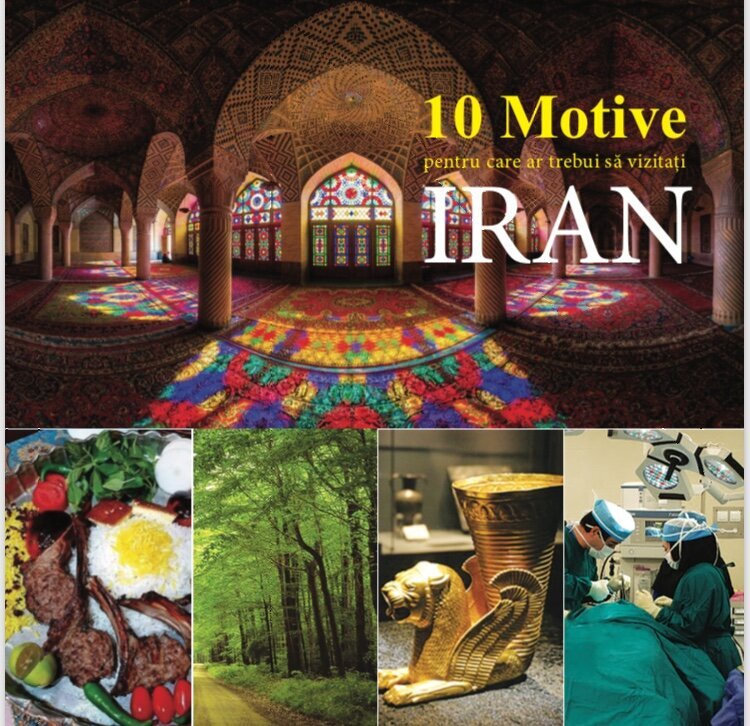Travel guide to Iran appears in Romanian

TEHRAN –A travel guide titled “10 Reasons Why You Should Visit Iran” has recently been published in Romanian, ISNA reported on Monday.
The book has previously appeared in 11 languages including English, Turkish, Chinese, and Arabic by the foreign tourism marketing office of Iran’s Cultural Heritage, Tourism and Handicrafts Ministry, the report added.
Introducing some of the historical, cultural, and tourist attractions of Iran to the tourist markets is the goal of publishing such travel guides.
Some experts believe Iran is still somehow “unknown” to many potential travelers due to the Western “media war”. Several estimates have been released so far on the extent of the tourism-related losses incurred by the pandemic.
According to the data compiled by the tourism ministry, the tourism of the country was growing before the corona outbreak, its revenues reached $11.7 billion in 2019, which accounted for 2.8% of GDP, nearing the average share of tourism in the world GDP, which was 3.2 percent. Some 8.7 million foreign nationals visited Iran during the Iranian year (1398) and Iran was ranked as the second fastest-growing country in tourism based on data compiled by the World Tourism Organization.
Experts expect Iran to achieve a tourism boom after the coronavirus is contained, believing its impact would be temporary and short-lived for a country that ranked the third fastest-growing tourism destination in 2019.
The Islamic Republic expects to reap a bonanza from its numerous tourist spots such as bazaars, museums, mosques, bridges, bathhouses, madrasas, mausoleums, churches, towers, and mansions, of which 26 are inscribed on the UNESCO World Heritage list. Under the 2025 Tourism Vision Plan, Iran aims to increase the number of tourist arrivals from 4.8 million in 2014 to 20 million in 2025.
Ancient Iran, also known as Persia, historic region of southwestern Asia that is only roughly coterminous with modern Iran. The term Persia was used for centuries, chiefly in the West, to designate those regions where the Persian language and culture predominated, but it more correctly refers to a region of southern Iran formerly known as Persis, alternatively as Pars or Parsa, modern Fars.
Parsa was the name of an Indo-European nomadic people who migrated into the region about 1000 BC. The first mention of Parsa occurs in the annals of Shalmanesar II, an Assyrian king, in 844 BC.
During the rule of the Persian Achaemenian dynasty (559–330 BC), the ancient Greeks first encountered the inhabitants of Persis on the Iranian plateau, when the Achaemenids—natives of Persis—were expanding their political sphere. The Achaemenids were the dominant dynasty during Greek history until the time of Alexander the Great, and the use of the name Persia was gradually extended by the Greeks and other peoples to apply to the whole Iranian plateau.
ABU/AFM
